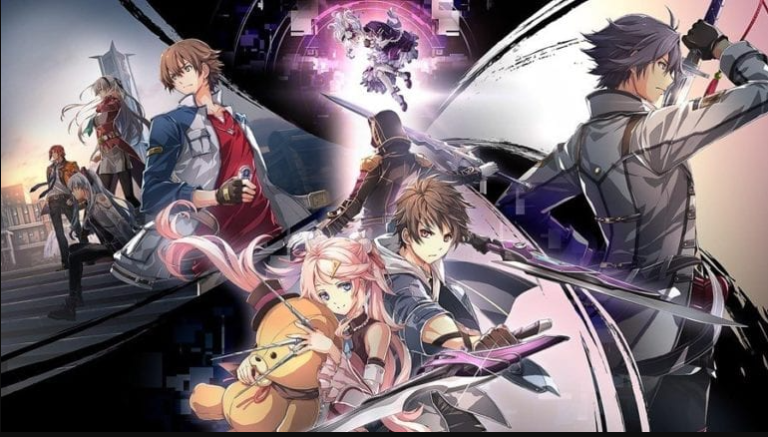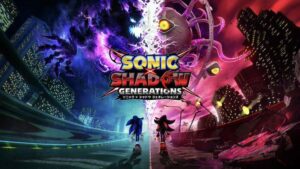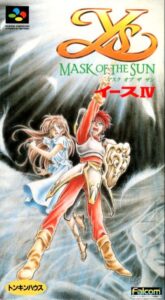2023 continues to be an excellent year for Falcom fans, both domestically in Japan as well as internationally. Earlier this year we saw the landmark localization of Trails to Azure, a project that some thought would never be released internationally. Still to come is the localization of Nayuta internationally, as well as the Japanese domestic release of Ys X. But no doubt many were excited to see the localization of a game I’ve failed to mention, which is none other than Trails into Reverie! Before we go any further I need to give special thanks to the folks over at Nis America for providing a review code, so that I can bring you my article on Trails into Reverie. I am eternally grateful for this opportunity. Does Reverie build on the franchise’s legacy and provide a proper finale to Western Zemuria as a whole? Does it build on the experiences of Cold Steel 4 and blaze a new trail? All your questions will be answered. Let us waste no time before diving right into one of Falcom’s latest additions to the Legend of Heroes saga!

Introduction & Leadup to Release
Following the release of Trails of Cold Steel 4, players saw a resolution to the Erebonian saga, the longest arc of games within the Legend of Heroes saga to date, a saga so long it lasted two console generations. Regardless of the quality of the game and the narratives it was a massive undertaking. Such undertakings often grow beyond their original scope. The Cold Steel saga was envisioned as a three game arc, but was expanded upon, realizing that the vision had to be altered. And when something like that grows beyond control it becomes more difficult to wrap up. Some fans may have had issues with how rushed the concluding epilogue for Cold Steel 4 felt, especially regarding how it handled the characters of previous arcs and the fate of Crossbell specifically. Fortunately for players, Falcom was hard at work on a game that would provide a more definitive end to the Crossbell problem and Western Zemuria as a whole.
Interviews conducted after Cold Steel 4’s initial Japanese release gave the impression that Toshiro Kondo, CEO and President of Nihon Falcom, had initially contemplated creating Reverie as a DLC add on, as an epilogue of sorts. But the project soon grew into its own game, a factor that is very similar to how Falcom had planned to go directly from Trails in the Sky Second Chapter to Trails from Zero before deciding to add one more game to Sky Saga. Trails into Reverie is a sequel to Trails of Cold Steel 4 as well as the Crossbell Duology Trails from Zero & Trails to Azure. But is also the spiritual successor to Trails in the Sky the 3rd in its mechanics and role in the series as well as the story it tells. In a sense, it is there to wrap up plotlines and character arcs from previous games whilst setting up a plethora of new ones.
Synopsis & Writing
Six months have passed since the events of Trails of Cold Steel 4 and specifically six months after the events of the game’s true ending. The kingdoms and empires of Zemuria have narrowly avoided the Great Twilight and Great War and it looks as if Crossbell will finally have its freedom after nearly a century of being a plaything between continent superpowers Erebonia and Calvard and after a brutal two-year occupation under Erebonian rule. However, a new threat and singularity arises to once again threaten Zemuria and it will take heroes, both old and new to combat this new threat, be they liberators of shades of azure, chevaliers, or even sinners that must answer Zemuria’s call.
Reverie is rather unique in how it delivers its narrative as it has no control over one set of characters from start to finish. Instead it takes control of multiple protagonists, each with their own stories that periodically intersect. There are three perspectives and a protagonist for each story. Lloyd and the Special Support Section(SSS) will be fighting to liberate Crossbell once and for all, Rean & Class VII will be tackling a rising threat in the empire, and newcomer the mysterious masked figure, the enigmatic “C”. Falcom calls this system the “cross-story” or “Trails to Walk” in English. Each route delivers a different narrative, but each one represents a piece of the larger puzzle. And only by experiencing all routes will the true nature of this new threat be revealed. The cross-story system lets the writers cover a lot of ground much faster than previous Trails stories and is something that I think Cold Steel 4 could have very much benefitted from.
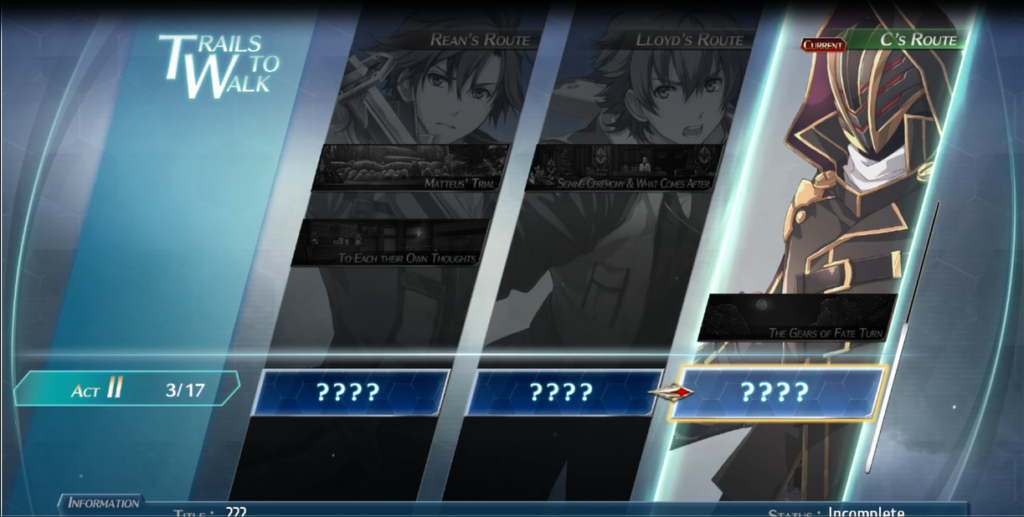
Cold Steel 4 was largely focused on Rean and company and that was perfectly fine as it was their arc. But CS4 also had plenty of characters and plotlines from previous arcs that felt more like fanservice rather than being of service to the story. But Reverie puts said characters in the limelight once more. Seeing the SSS on the frontlines front and center again brings me joy beyond words and answers a lot of questions players have likely had since the end of Azure.
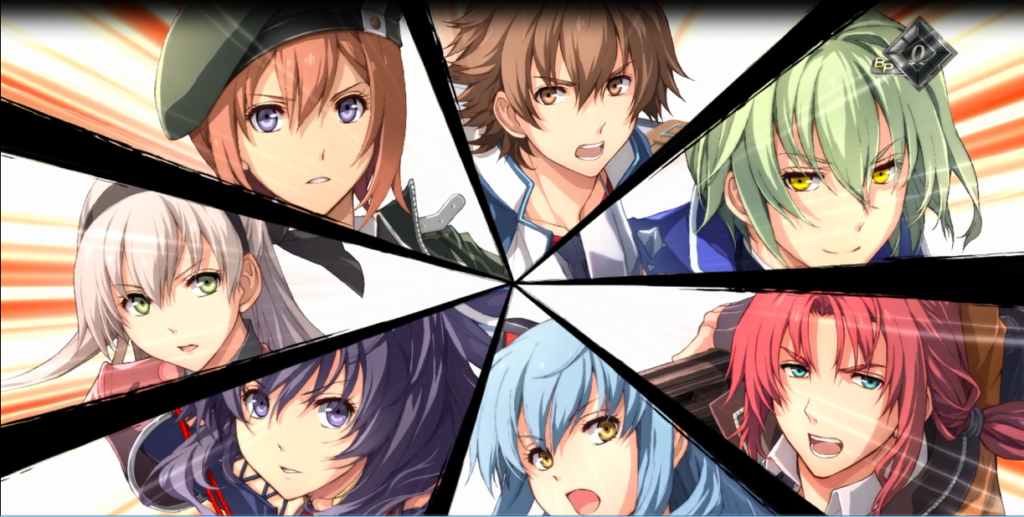
Rean and friends have less of a role in the narrative compared to the likes of the Cold Steel Quadrilogy but they still play a sizable role in the game’s events, even if they aren’t as active as some might like. And Reverie gives some love to the characters who were kind of left out to dry during the Erebonian Saga. Kurt in particular is given some much needed time to shine and sets the stage nicely for his return beyond Erebonia’s borders.
I’ve been avoiding talking about our third protagonist, the mysterious C and as this is being written ahead of the release I’ve no intention of spoiling anything. But I’ll say right here that C’s route and the way he is written are the highlight of Reverie and represents Falcom taking a great deal of narrative risk, something that the series has sorely lacked. Lloyd and Rean’s route treads familiar paths but C’s route brings an abundance of new ideas to the table and displays Falcom’s writing acumen at its very best.

In a general sense, the writing of Reverie is engaging, gripping, and paced much better than what was presented throughout the Cold Steel saga. If Cold Steel 4 disappointed you as much as it did me, have no fear as Reverie is Falcom at its narrative best.
Gameplay
Just in case you weren’t aware Trails into the Reverie marks the 10th game within the Trails subseries. And one might wonder whether after so many installments Falcom is still capable of bringing the goods, and the answer is a whole hearted yes. Reverie also marks the final game of the series created in the Phyre engine and I get the sense Falcom wanted to go out on a high note. The core gameplay loop is instantly familiar to long-time fans with a turn- based battle system that has been refined over a decade and a half. They also brought over the Zero craft turn bonus from the Evolution games. Yes, it’s still unbalanced here as it was there, but this would be the first and last Falcom-made Trails game to feature it.
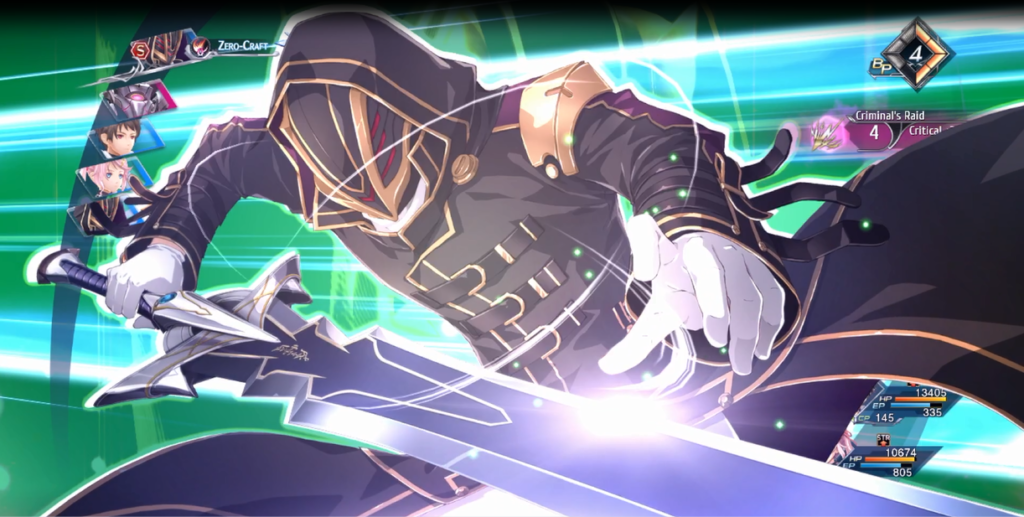
The major new addition to the battle system is the United Front system in which players will use the assault gauge to make use of the entire party (frontline and reserve members) to launch a “valiant” physical or magical offensive or to provide a party-wide buff and heal. Similar to how the addition of brave orders redefined the Bravery point system in Cold Steel 3, the United front redefines how players think on the battlefield. The assault gauge was previously only used to trigger advantage encounters and had no impact within the battle itself. No longer is this the case as players must now make conscious decisions on what the gauge will be used for. Will you prioritize giving your party an early advantage in battle? Or will you make use of the new United Front to deal massive damage and support the party? The choice is yours.
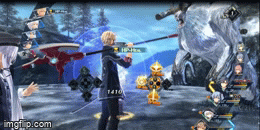
Given the nature of Reverie’s design this is easily the most combat-heavy Trails game to date. The game features no traditional side quests and bonding events have been completely scrapped. This changes the overall gameplay loop from the series’ tradition, very similar to how The 3rd played, but I find this is a change largely for the better, as the story and gameplay are given more room to breathe. It also maximizes the time players spend playing the game without sacrificing pacing. The game also boasts an unsurpassed roster in terms of playable characters as Reverie has a total of 55 playable characters. Now, the thought of unlocking orbment slots for that many characters makes me weep, but it does provide an unparalleled level of variety in team setups. Much like Trails in the Sky, The 3rd, Reverie is an open sandbox that provides all the tools for you to succeed, but it’s up to you to make use of them.
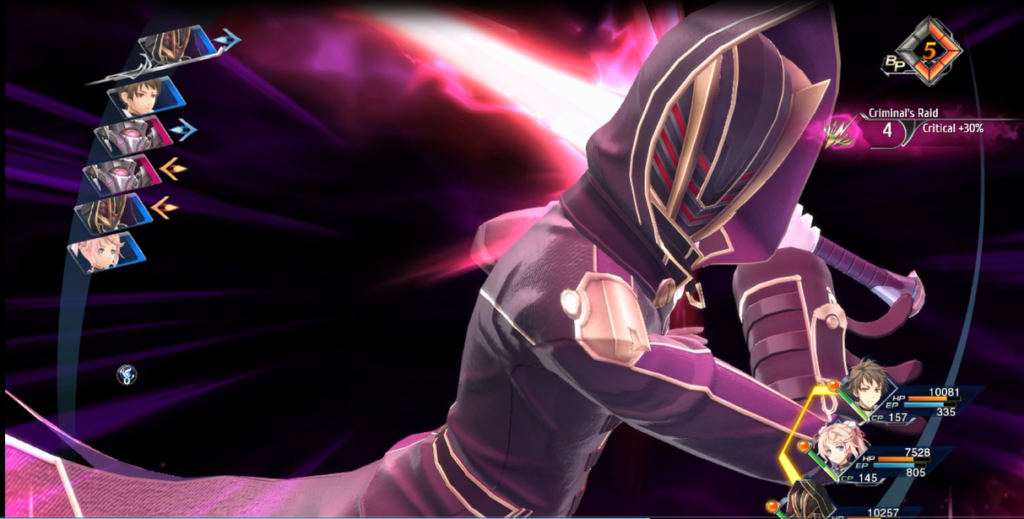
Presentation & Score
Now, if there was one thing I was looking forward to in Reverie it was to see the land of Crossbell fully realized and rendered in 3D and Falcom didn’t disappoint. From the Ancient battlefield to the Moon temple, Armorica and Mainz, it is all here and beautifully rendered. We even get an inside look at locations in Crossbell that players have long wanted to explore, and I will let you discover those for yourself. Crossbell City also has all of its districts fully rendered with the exception of the Downtown District and Residential Street. Unfortunately, Erebonia did not receive the same level of detail, as the empire is barely in this game and the Erebonian locales we do see are all ones we have seen before. The model work and animations are slightly improved from CS4, and we even get a handful of scenes that boast incredibly smooth animation due to Falcom making tactical use of motion capture.
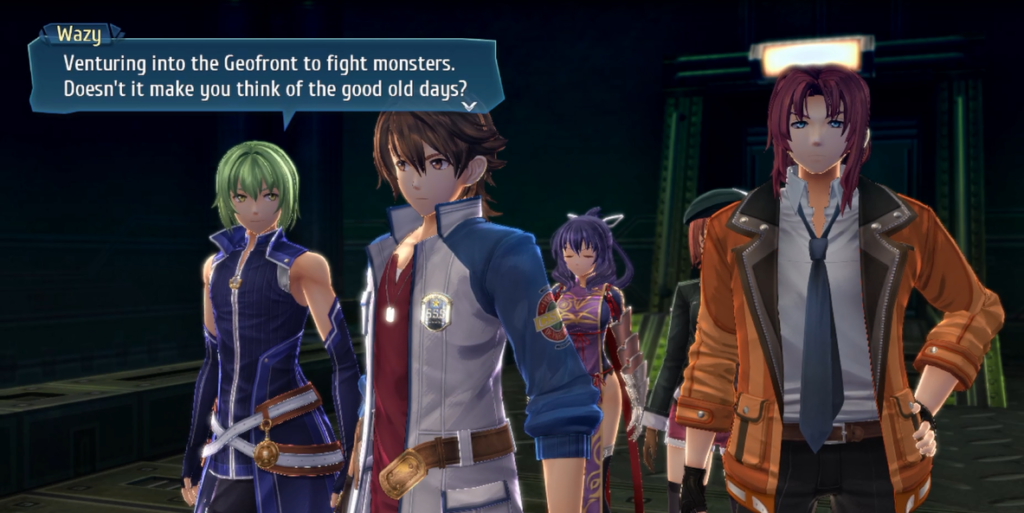
Given that we did not receive an English dub for Zero and Azure, Trails into Reverie marks the first time we get to hear many of Crossbell’s characters in English, and most do a phenomenal job. Wazy and Noel’s VAs do great work and despite recasting Rixia after Cold Steel 2, she also does an incredible job. Similar compliments to the recast for Kea who actually sounds like a teenage girl as opposed to whatever her performance in CS4 was trying to accomplish. The quality of the dub is all over the place, as some do phenomenal work, while others feel miscast. But the true highlights of this dub are Robbie Daymond and D.C. Douglas whose work stands shoulder-to-shoulder with their Japanese voice acting counterparts.
The score is pretty amazing as per Falcom Sound Team’s standard. The main standouts are Singa, Jindo, and newcomer Koguchi. While Koguchi only wrote a couple of compositions for Reverie he would go on to become a household name for the scores on his later work on Kuro no Kiseki, as well as Kuro no Kiseki II Crimson Sin. Singa himself, despite his inconsistency, manages to deliver adrenaline-pumping tracks such as Emergency Order, which almost excuses the fact that tracks such as Flash Your Fighting Spirit are incredibly repetitive and play more than they should.
So, I’ve been praising the daylights out of this game but let me discuss some of the things I don’t like about it. Much like The 3rd Reverie features optional scenes to flesh out the saga, but unlike the 3rd, which had memory doors taking place before, during, and after the original duology, all of Reverie’s doors or daydreams as they’re now called, take place after Cold Steel 4, which feels rather restrictive in terms of the side stories they can tell. I would have preferred some fleshing out of certain plotlines that were rather vague. For example, I would have taken a daydream showing how the Imperial Liberation Front initially came together or how the planning went for the Erebonian and Calvardian Terrorists prior to the trade conference in Azure, to name just two.
We are 10 games into the Trails series, and we still cannot move and attack during the same turn and at this point it feels less like they didn’t consider it, and more a case of they just didn’t feel like adding such a basic feature. You may also take issue with certain narrative elements of Reverie’s story and overall design, especially if you are a stickler for the traditions of Cold Steel games. Enemy orders are still exceedingly rare and I can count the amount of fights on one hand where they occur. I would appreciated them being more commonplace as it would have added some manner of checks and balances to the order system and brought some much needed challenge to the battle system

Conclusion
At the end of the day my issues with Trails into Reverie are minor gripes since the game delivers not only in its narrative but also in its gameplay mechanics. It brings a definitive end to our adventures in Western Zemuria whilst setting up a bright future for the series. The following game Kuro no Kiseki makes sweeping changes in both narrative and gameplay mechanics, making Reverie the last of the old guard as far as Trails games go. It truly is an end of an era. Trails into Reverie is a phenomenal role-playing game, and I can’t recommend it enough! This is sure to eventually become a time honored classic. Trails into Reverie releases for PlayStation 4 & 5, Nintendo Switch and Windows PC July 7th 2023

